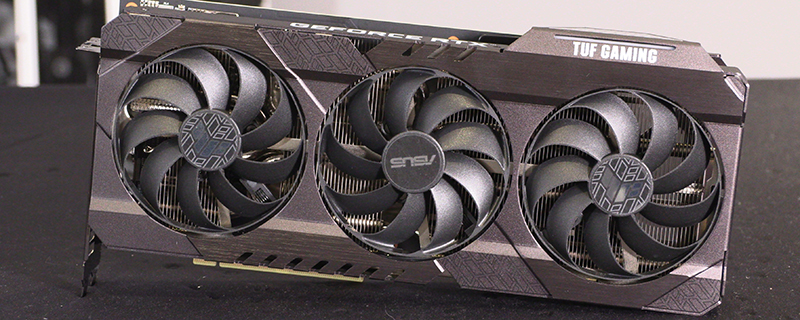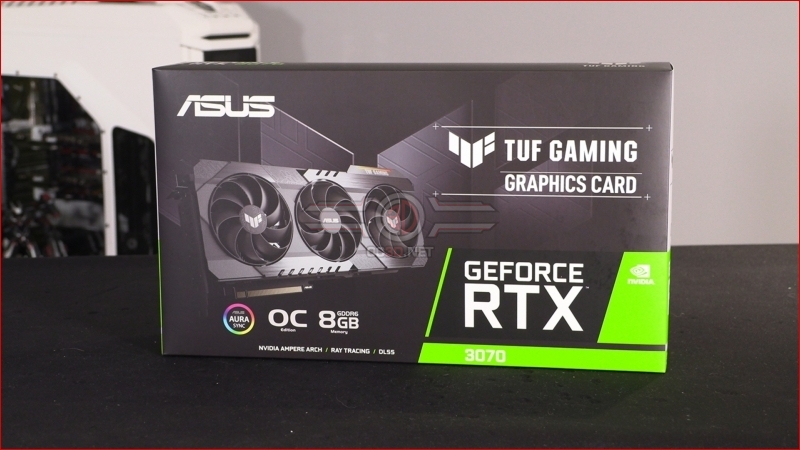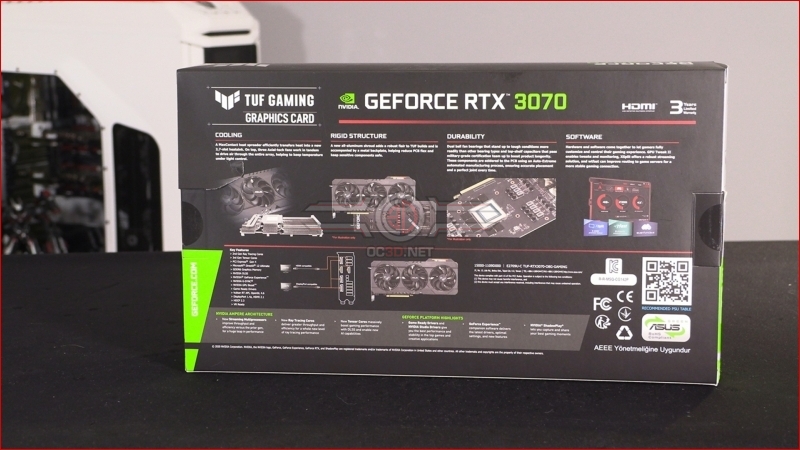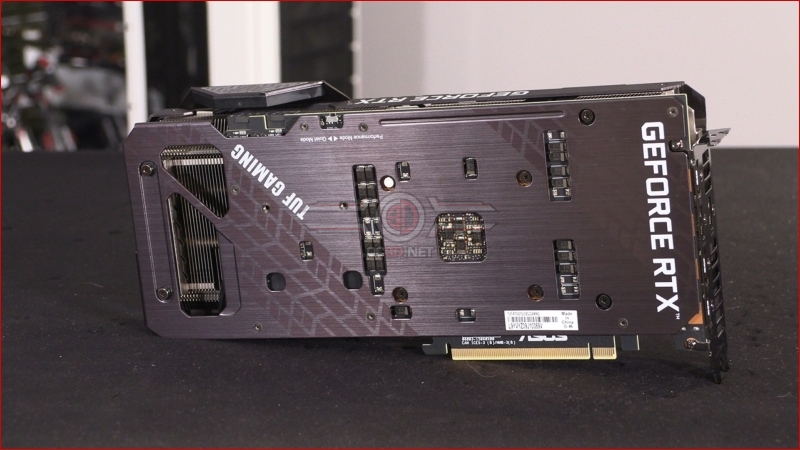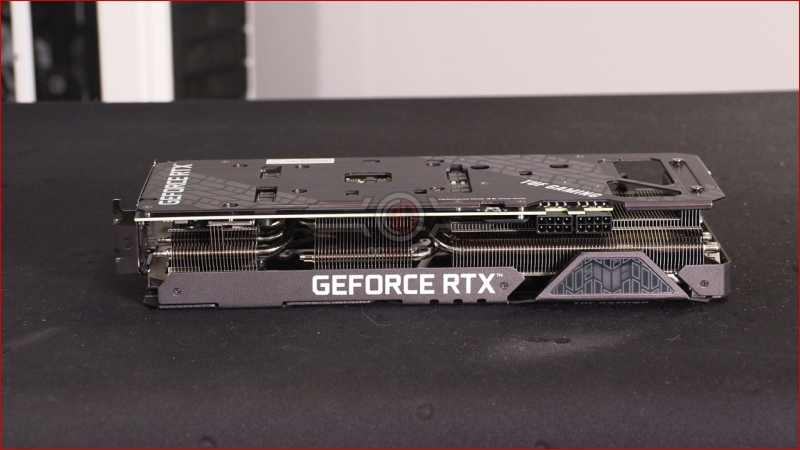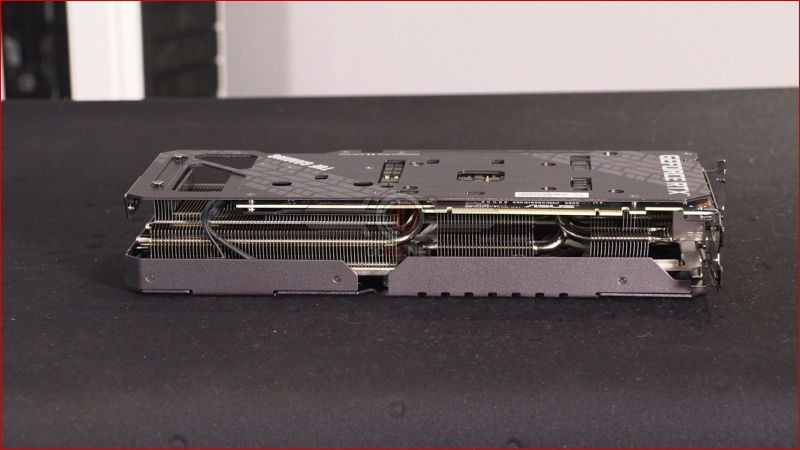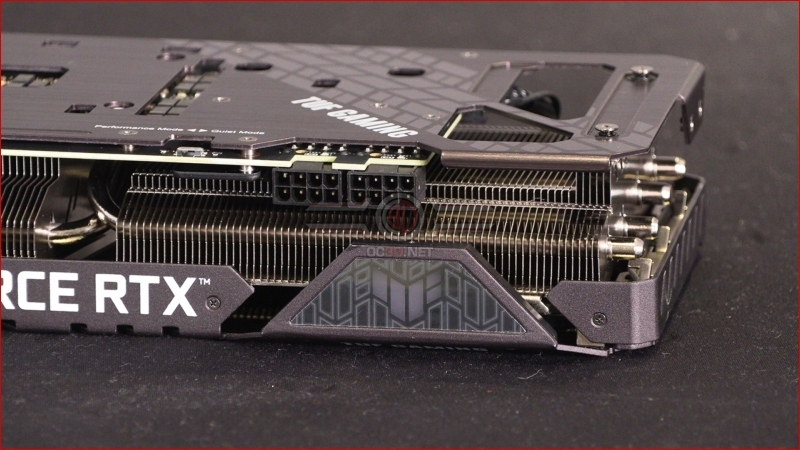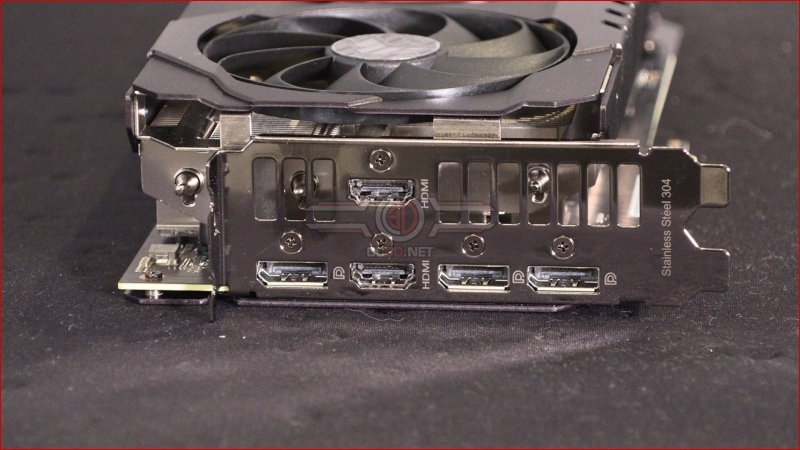ASUS RTX 3070 TUF Review
Up Close
There is a bold simplicty to the TUF packaging. Product image. Model name. Features on the back. Done. No big swathes of RGB effects or all the things we used to see – knights and jet planes mainly – on old GPU boxes. It’s nice and speaks to the laser focus of the design.
Maybe we saw the Strix covering style so much we got used to it, but the shroud on the TUF is a refreshing change with enough angles to keep your eye interested without looking like a failed origami experiment. There are three fans with the central one spinning counter to the outside two to help eliminate dead spots and help keep things frosty even under harsh loadings.
Around the back we have a lovely brushed aluminium backplate to help spread the heat across the full width of the card. We have to say we don’t quite understand what the tyre print is about, unless it’s a play upon how tough/TUF the card is? You can also see that ASUS have adopted the cutout on the inside of the card that helps push air towards the CPU area for extra cooling.
From the side view you get to enjoy both the aluminium shroud we spoke about above, as well as the wealth of heatpipes and high fin density on the DirectCU cooler. The Ampere GPU is very efficient and so not very hot by default, but the TUF promises to give you all the headroom you need for any manual overclocking efforts you want to undertake.
With a lengthy cooler on a smaller PCB the twin 8pin PCIe power inputs are a little further in than normal but still much better placed than they are on the Nvidia Founders Edition. You can also see the TUF logo just below it that is your port of call for RGB customisation.
Lastly around the back we have two HDMI ports that support 8K60, a big improvement upon the potential of the previous generation, alongside the three popular DisplayPort outputs.



